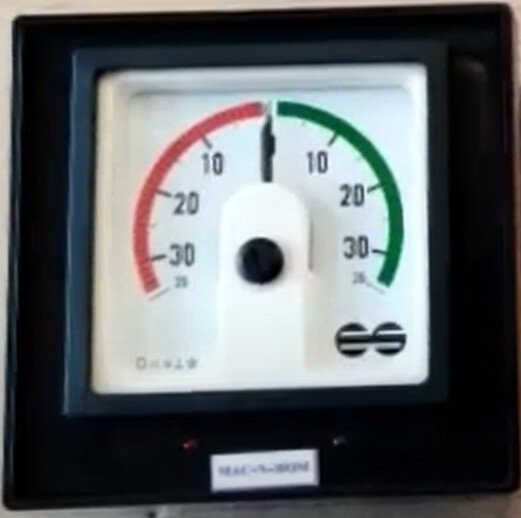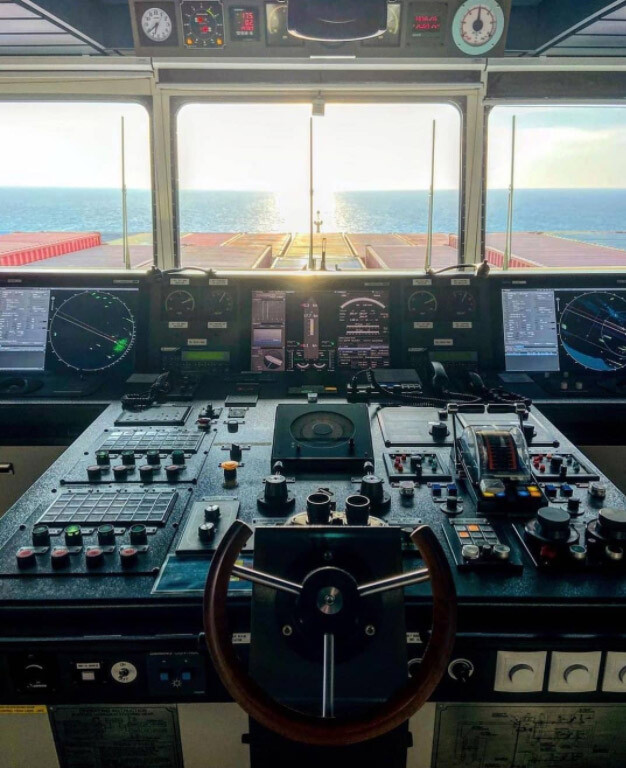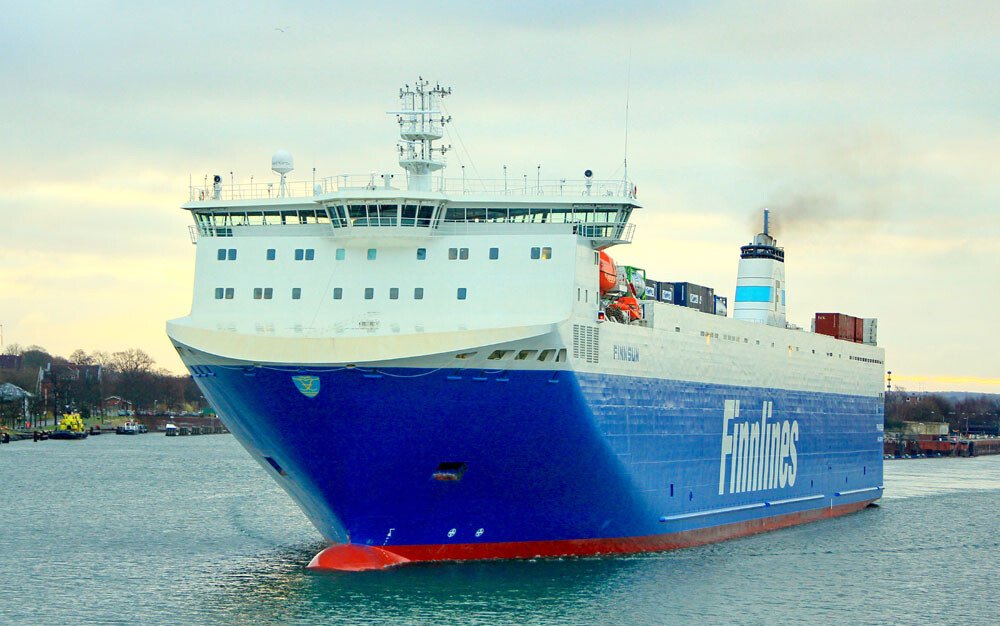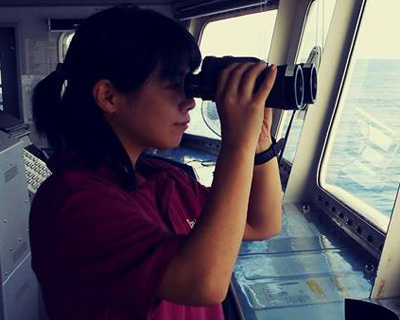Understanding helm orders and rudder commands is one of the requirements for becoming a good helmsman.
If you think it is as simple as driving a car, then your first time on the ship’s helm would be a 20,000 gross tonnage worth of chaos.
Ships use specific terms for steering and these are not found anywhere else. And since a vessel’s organization may constitute different nationalities, the IMO standardized oral commands for delivering wheel orders.
If you plan on steering a ship, you must first practice them by day or night. Constant familiarization with helm orders will help you become a better helmsman.
Furthermore, proper execution of rudder commands should not be limited to cadets or ratings. Deck Officers too must know them very well.
This is vital in punctually identifying helmsman mistakes or even that of pilots that may lead to accidents.
Standardizing Helm Orders
The International Maritime Organization (IMO) standardized wheel orders which is recommended in the industry. What we use today can be found in the book Standard Marine Communication Phrases (SMCP).
The phrases used in commanding rudder angles are the same throughout the industry.
Once you learn them on one ship, you can apply them to your next vessel. Mastering them today means mastering them forever.
Helm Orders, Meaning, and Execution
The ship’s helm is a wheel that you turn to control the angle of the rudder. It is also called the steering wheel.
I will interchangeably use the steering wheel and rudder henceforth.
1. Midships, Rudder midships, or Midships the wheel
These three orders are one and the same. It means that the rudder is to be held in the fore and aft positions.
You can do this by turning the steering wheel to zero position in the wheel or rudder angle indicator.

2. Port / starboard five
Turn the rudder five degrees to port/ starboard as shown in the indicator.
3. Port / starboard ten
Turn the rudder ten degrees to port/ starboard as shown in the indicator.
4. Port / starboard fifteen
Turn the rudder fifteen degrees to port/ starboard as shown in the indicator.
5. Port / starboard twenty
Turn the rudder twenty degrees to port/ starboard as shown in the indicator.
6. Port / starboard twenty-five
Turn the rudder twenty-five degrees to port/ starboard as shown in the indicator.
7. Hard-a-port / starboard, hard-to-port / starboard, or hard port / starboard
All three have the same meaning.
However, their execution may vary depending on the type of rudder the vessel has.
You have to obtain this information during your onboard familiarization or from the helmsman you’re going to relieve. Otherwise, you can ask the OOW.
I was on a tanker ship using a Becker rudder and the maximum rudder angle was 60 degrees on both sides.
8. Nothing to port/starboard
Avoid allowing the vessel’s head to go to port/ starboard.
9. Meet her or Check her
This is one of the most confusing commands but the most seldom used.
In SMCP, the definition only goes as far as this: Check the swing of the vessel´s head in a turn.
It doesn’t give context so let’s elaborate below.

Execution:
The helm order “meet her” is used when the ship is turning.
When the conning officer or pilot gives you this command, immediately check the ship’s heading and apply a counter rudder to stop the vessel’s swing.
You don’t have to follow a particular course. Whatever the ship’s heading when she stops turning, that is what you are going to report to the Pilot or your Captain.
Your response? The Vessel’s heading now is …..
10. Steady
This is similar to the wheel order meet her. It is given when the vessel is swinging fast.
However, the order steady is most widely used today.
When the conning officer gives this command, you as the man on the wheel, must immediately Reduce the vessel’s swing as rapidly as possible!
Its full execution is completed when the ship stops turning.
When it does, you can now say to the pilot, “Steady now, Sir” or “Steady now, Mr. Pilot”.
You also don’t need to report the course when the ship stops turning.
11. Steady as she goes
The helm order steady and steady as she goes is given consecutively.
Imaging this:
The vessel is in a tight turn and swinging very fast. The conning officer then wants to reduce the vessel’s swing as it approaches the intended heading.
He commands the helmsman to “steady” the ship.
When the conning officer sees that the ship’s swing is greatly reduced, his next command would be “steady as she goes”.
As soon as he says this, immediately check the compass heading and steer the vessel on that course. In short, you have to steer on the compass heading indicated at the time of the order.
Here’s the typical scenario:
Pilot: Steady as she goes.
Helmsman: (*looks at the gyro compass and responds,) Steady as she goes 0-7-7.
*helm execution*
Helmsman: Vessel steady on 0-7-7. Or he can simply say, Vessel steady now on 0-7-7.
Pilot: Very well.
12. Ease to five / ten / fifteen / twenty
Reduce the amount of rudder to 5°/ 10°/ 15°/ 20° and hold.
For example, if your current rudder angle is at port thirty and the pilot orders you to ease to ten, immediately put the rudder angle to port ten.

Here’s the typical scenario
Pilot: Starboard twenty.
Helmsman: Starboard twenty… Starboard twenty now, sir.
Pilot: Ease to five.
Helmsman: Ease to five… Starboard five now, sir.
Pilot: Very well.
13. Keep the buoy/ mark/ beacon/ lighthouse… on the port side / starboard side / ahead
Self-explanatory. Keep the target on the side the pilot tells you.
Sometimes, he does not give any course but only these markers.
Before doing so, however, he will make sure which marker he is referring to.
Pilot: Keep the leading light dead ahead!
Your response: Leading lights dead ahead now, Mr. Pilot.
or
Your response: Keep the buoy on the port side, copy.
Steering by Compass
Not all the times helm orders are given.
In some cases, the conning officer commands you to steer a specific course. It’s up to you on how to best execute it.
Here are some examples.
14. Starboard, steer zero-eight-two.
Bring the ship’s heading to zero-eight-two degrees (082°).
Your response: Starboard, steer zero-eight-two degrees.
*(After completing the order)
Helmsman: Starboard, steer zero-eight-two now, sir.
Other response variations may include:
Helmsman: Zero-eight-two now, sir.
Or
Helmsman: Steering/ Heading zero-eight-two now, sir.
Conning Officer: Very well, thank you.
Other Helm Commands
Some conning officers, instead of looking at the rudder angle indicator, will ask you something.
Perhaps they are using the binoculars to try to avoid something and want to double-check the previous command.
Or they could be trying to get your attention like the ones below.
15. What’s your course/ heading/ rudder?
The conning officer is asking about the course/ heading or rudder angle.
Your response: Course/ heading is zero-nine-seven.
Or
Helmsman: Rudder is starboard five, sir.
16. Mind your helm/ rudder
In the most basic terms, it says “Pay attention!”
The conning officer wants you to focus on your steering instead of being distracted by something else.
He usually says this if he notices that you are not paying attention to your duties on the wheel like chatting too much.

17. Report to me if you have no steering
Steaming at a slow speed affects the steering of the ship. Since the pilot is aware of this, he usually tells you to report if you have no steering.
If it comes to this situation and you report it to him, he usually gives the engine a “kick” just to turn the vessel.
Report back to him if the vessel starts turning or steering is back by saying so.
18. Finish with the wheel
Lastly, when the mooring operation is finished, the ship is alongside, and the mooring ropes are fast, it’s time for the conning officer to let you go of this duty.
The proper way of saying this is, “Finish with the wheel.”
Your response would be, “Finish with the wheel, thank you.”
Or if the rudder is not in amidships (it’s usually in midship position before letting go), here’s a typical response.
Helmsman: Finish with the wheel, rudder is still on port ten.
The conning officer would then tell you to put into midships before letting you go.
Steering the ship doesn’t only happen during canal transit. It is also used in the open sea during bad weather or when there is heavy traffic.
Shipmasters also use these helm orders during anchoring since they mostly prefer hand steering.
May the winds be in your favor.



Thanks much Gibi – this seems helpful to imagine what this job is like when looking for new work. Fair winds to you.
You’re welcome. Safe sailing to you also.